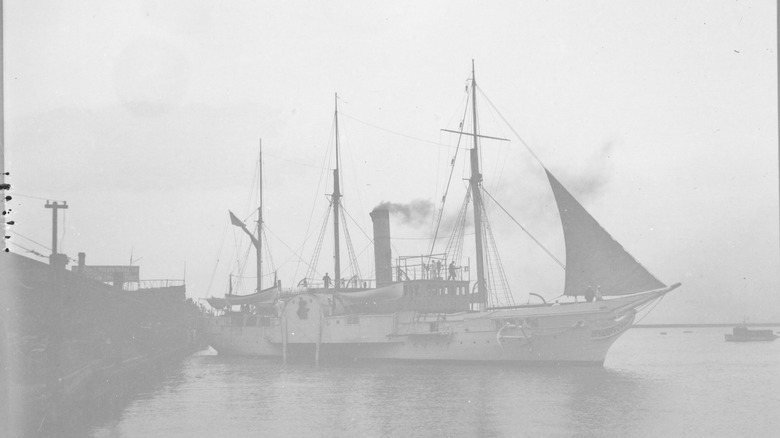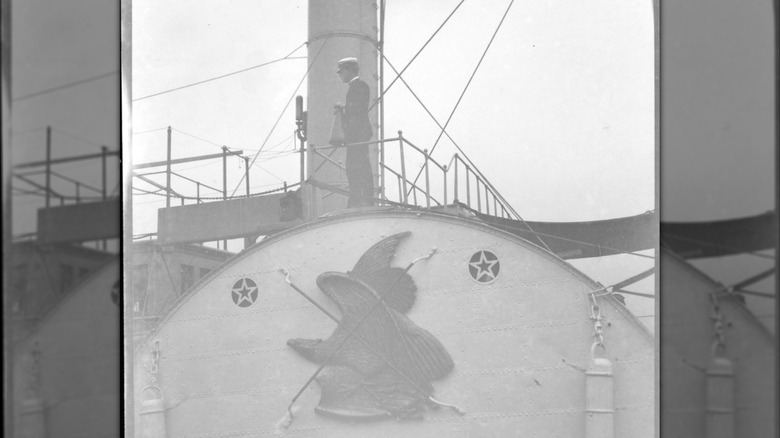This Might Be The Strangest Warship Ever Used By The US Navy
Naval history is full of bizarre experiments; some driven by innovation, others by desperation. From Japan's Ise-class battleship-carriers to Iran's ballistic missile "Q-ship," Shahid Mahdavi, the seas have seen some truly odd vessels. But the USS Wolverine might top them all.
Before it trained more than 15,000 Navy pilots (including a young George H.W. Bush), the USS Wolverine was something entirely different: a floating luxury hotel. Originally named Seeandbee, the 500-foot paddle steamer was the pride of the Cleveland and Buffalo Transit Co., built in 1912 with mahogany panels, private parlors, and enough space for 1,500 passengers. She was the largest sidewheel passenger ship ever built for the Great Lakes, complete with a ballroom and onboard saloons.
But by 1942, war had changed everything. After the attack on Pearl Harbor, the U.S. Navy needed new ways to train pilots without risking combat-ready aircraft carriers (why they needed them in the first place is a completely different story). The solution? Convert Seeandbee into a freshwater flattop. The ornate passenger decks were ripped off and replaced with a wooden flight deck. Renamed USS Wolverine, she served in Chicago as part of the Navy's "Corn Belt Fleet", a strange pair of coal-burning, paddlewheel carriers used exclusively for training over Lake Michigan.
Technically speaking, USS Wolverine wasn't even a warship. She had no weapons. No real armor. She couldn't store planes below deck and couldn't deploy in combat. But between 1942 and 1945, she played a crucial role. Alongside her sister ship, the USS Sable, Wolverine helped qualify over 15,000 Navy personnel in carrier takeoffs and landings. These freshwater flattops allowed the Navy to preserve its actual fleet for the Pacific Theater while still ramping up its air power.
Not a real carrier, but vital to winning the war
Operations were based out of Chicago's Navy Pier. Pilots flew from nearby Naval Air Station Glenview and practiced carrier landings in real time, on a ship that wasn't moving all that fast. Problems did arise. With no hangar, damaged planes had to be parked on deck, ending training runs early. On windless days, the carriers couldn't reach the wind-over-deck minimum needed to safely land modern fighters like the F6F Hellcat or F4U Corsair (both one of the most legendary naval aircrafts ever flown).
Still, by May 1943, Wolverine had logged 7,000 successful landings, and losses were minimal. The Navy got exactly what it needed, and did it using a steamboat from Cleveland. After the war, Wolverine was decommissioned and sold for scrap in 1947. Her luxurious interiors were long gone, and her role as a carrier was finished. But her legacy lives on. She remains one of the most unconventional vessels ever commissioned by the U.S. Navy: a coal-fired, sidewheel paddle steamer turned aircraft carrier used only on Lake Michigan.
What made her unique wasn't just the conversion, but the context: the U.S. Navy built an aircraft carrier it knew would never leave the Great Lakes. It was designed to help pilots learn, not fight. And that decision arguably helped turn the tide of war by preparing thousands of aviators for combat, without sacrificing a single frontline ship. From high-end cruises to high-stakes training missions, Wolverine's strange second life is a reminder that sometimes, the weirdest ideas are the ones that work.

